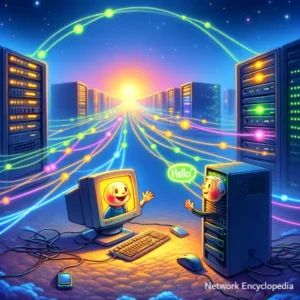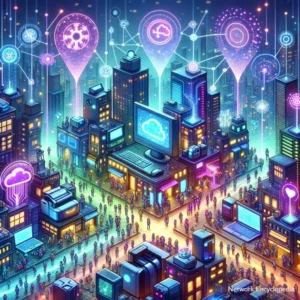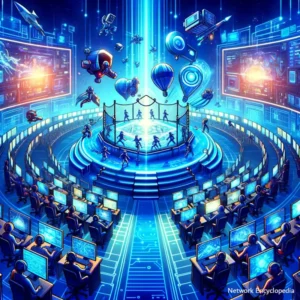Once upon a time, in a land not so far from your charging cable, lived a group of computers. These weren’t your average, run-of-the-mill machines content with solitary tasks. No, these computers yearned for something more—a connection, a network, a social life. They were tired of the same old routine: compute this, process that. They wanted to share, to collaborate, to play the digital version of “tag” across vast electronic fields.

Enter our hero, TCP/IP, also known as the Internet Protocol Suite, though it preferred the nickname “The Connector.” TCP/IP was the new kid on the block, boasting an impressive ability to help computers talk to each other, no matter the distance. It was like having the postal service, telephone, and telegraph all rolled into one, but for computers. And so, our story of connection begins.
The Meet-Cute
It all started when Alice, a sprightly desktop with a knack for numbers, sent a digital “hello” to Bob, a savvy server residing in a data center far, far away. Using TCP/IP, Alice’s message traveled through the electronic ether, hopping from router to router in what could best be described as an exhilarating game of digital leapfrog.

Bob, upon receiving the message, was overjoyed. Finally, someone who spoke his language! He quickly replied, and just like that, a friendship was born. The other devices watched in awe as Alice and Bob shared data, resources, and the occasional cat video, their interactions seamless and effortless thanks to TCP/IP.
The Social Network Expands
Word of Alice and Bob’s newfound friendship spread like wildfire. Other computers, feeling the FOMO, quickly adopted TCP/IP to join in on the fun. Soon, a vast network of interconnected devices emerged, from the humble printer in the corner to the top-of-the-line gaming PC, all chatting and sharing away.

The network became the place to be—a bustling metropolis of data exchange. Devices sent emails as casually as passing notes in class, streamed movies like they were binge-watching the latest TV series, and transferred files with the excitement of trading baseball cards. Life in the network was good.
Fun and Games
But it wasn’t all work and no play. Oh no, the computers knew how to have fun. They organized gaming tournaments that spanned the globe, with devices of all shapes and sizes competing in epic battles that would make even the most hardened gamer weep with joy. They held virtual concerts where digital avatars danced the night away, and they created sprawling online worlds that were limited only by their processors’ imaginations.

TCP/IP, watching over this digital utopia, couldn’t help but smile. It had transformed the lives of these computers, bringing them together in ways they never thought possible. No longer were they isolated machines performing tasks in solitude; they were part of a community, a family.
Epilogue: Life is Good
And so, our tale comes to a close, but the story of our networked friends continues. With each passing day, they find new ways to connect, to share, and to experience the world together. Thanks to TCP/IP, life for these computers is more than just bits and bytes; it’s about connection, friendship, and a whole lot of fun. Life, indeed, is good.
And let’s not forget the moral of our story: no computer is an island, especially not in the age of TCP/IP. So, the next time you log on, send a little digital “hello” out into the void. Who knows? You might just make a computer’s day.
